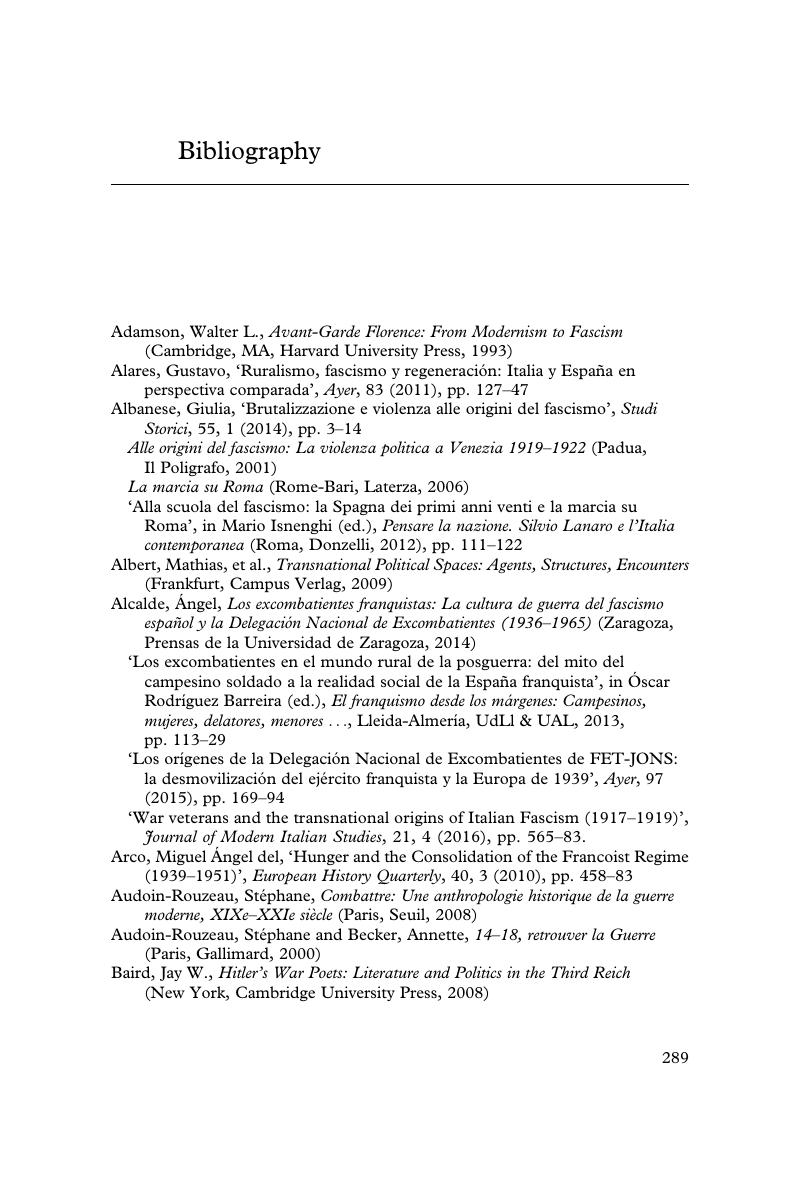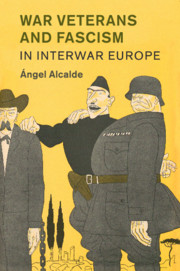Book contents
- War Veterans and Fascism in Interwar Europe
- Studies in the Social and Cultural History of Modern Warfare
- War Veterans and Fascism in Interwar Europe
- Copyright page
- Dedication
- Contents
- Figures and Tables
- Acknowledgements
- Abbreviations
- Introduction
- Part I Fascism and Veterans after the Great War
- Part II Fascism and Veterans during the 1920s
- Part III Fascism and Veterans during the 1930s
- Sources
- Bibliography
- Index
- References
Bibliography
Published online by Cambridge University Press: 29 June 2017
- War Veterans and Fascism in Interwar Europe
- Studies in the Social and Cultural History of Modern Warfare
- War Veterans and Fascism in Interwar Europe
- Copyright page
- Dedication
- Contents
- Figures and Tables
- Acknowledgements
- Abbreviations
- Introduction
- Part I Fascism and Veterans after the Great War
- Part II Fascism and Veterans during the 1920s
- Part III Fascism and Veterans during the 1930s
- Sources
- Bibliography
- Index
- References
Summary

- Type
- Chapter
- Information
- War Veterans and Fascism in Interwar Europe , pp. 289 - 306Publisher: Cambridge University PressPrint publication year: 2017



